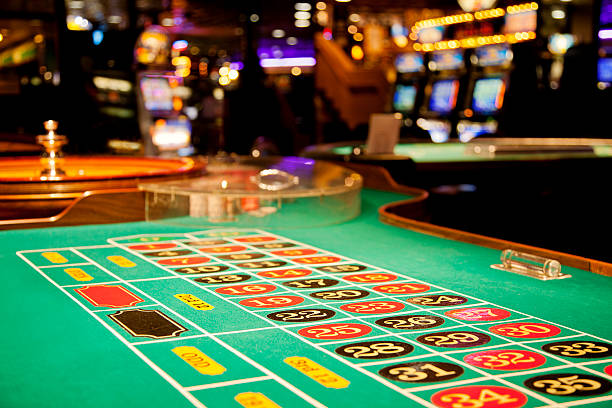
Beneath the glittering illuminations plus the enticing noises of rotating wheels lies an dynamic realm in which creativity meets mathematics: the creation of casino games. As players converge to gaming establishments seeking thrills and the possibility of winning big, a vast amount of work takes place behind closed doors to create these games for their enjoyment. From the initial concept to the ultimate product that players interact with, numerous elements are brought together to ensure a captivating play experience.
Creators, engineers, and game developers collaborate to merge cutting-edge technology with enthralling gameplay features. Each aspect, from graphics plus audio elements to probabilities plus returns, is carefully crafted to draw in players plus keep them entertained. Understanding the intricate process of how casino games are made reveals not only the technical expertise involved but also the artistic vision that transforms these immersive experiences to life.
Game Design Workflow
The game process begins with idea generation and concept development, where creators develop concepts for innovative casino games. This initial phase typically includes identifying potential audiences and understanding market trends. Designers take into account elements like game mechanics, themes, and payout structures to develop an immersive experience. Teamwork between game designers, mathematicians, and artists is essential to ensure a well-rounded concept.
Once a concept is chosen, the next stage involves creating prototypes and testing. Designers build a functional version of the game to assess its playability and mechanics. This allows for adjustments and refinements based on feedback from testers. Reiteration is key, as designers may go through multiple rounds of evaluations to optimize gameplay balance and user experience. This stage is essential for spotting any possible issues before the game is finalized.
After testing, the game moves into the development phase and production. This includes the technical aspects of coding the game software, integrating graphics, and ensuring compliance with gaming regulations. Quality assurance testing verifies that the game functions seamlessly across different platforms and devices. Once everything is refined, the game is prepared for launch, often accompanied by marketing strategies to attract players and generate excitement around the new casino offering.
Tech and Development
The evolution of gambling games has evolved significantly with advancements in technology. Contemporary game design often features top-notch graphics, captivating sound effects, and engaging animations that deliver a captivating experience for players. Game developers use complex software tools and coding languages to create these interactive gaming experiences. Additionally, the use of RNGs ensures fairness and unpredictability in outcomes, which is crucial for maintaining player trust and compliance with gaming regulations.
In recent years, the surge of online casinos has pushed the boundaries of game development even further. Developers are now able to design games that cater to a global audience, integrating features such as live dealer options and VR environments. This transition has encouraged new ideas, leading to unique game mechanics and formats that enhance player engagement. Gaming on mobile devices has also become a major focus, encouraging developers to optimize games for mobile phones and tablets, ensuring accessibility and convenience for players on the go.
Cooperation among creators, visual artists, and math experts is essential in the creation process. Each team contributes their expertise to ensure games are not only visually appealing but also mathematically sound and enjoyable. The integration of player feedback during testing phases allows developers to enhance game features and functionalities, ultimately leading to a positive launch. As technology continues to advance, the potential for new game concepts and experiences is limitless, promising an exciting future for casino games.
Assessing and Quality Assurance
Once a casino game has been designed, it enters the critical phase of testing and quality control. This phase ensures that the game operates flawlessly and provides a balanced experience for gamblers. Teams conduct extensive tests, including functionality checks to verify that all game features work as expected. Each component, from graphics to sound effects, is reviewed to ensure high standards are met.
In addition to functionality testing, the game undergoes rigorous compliance checks to meet regulatory requirements. Multiple jurisdictions have specific rules governing game fairness and player protection. Quality assurance teams will check that the random number generators are functioning correctly and that the game’s payout percentages correspond with market standards. This thorough examination helps build trust with gamblers and regulators alike.
Finally, pre-launch testing may be conducted with actual users to collect feedback on user experience. This invaluable insight allows developers to implement necessary adjustments before the public launch. Tackling any possible issues identified during this phase helps ensure that gamblers will enjoy a fluent, captivating experience when the game goes live. MCW77 The commitment to excellence reflects the industry’s dedication to delivering pleasant and trustworthy casino games.